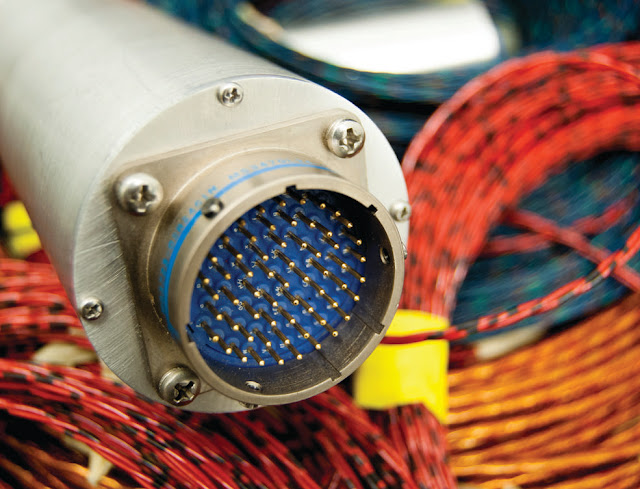You would be forgiven for envisioning a floating Pidgey or a wandering Pikachu at the mere mention of augmented reality (AR), given 2016’s gaming phenomenon Pokemon Go is still arguably the technology’s most popular use case to date.
But, as we are beginning to see, the potential of AR goes far beyond capturing tiny virtual creatures in a real-world setting, as some of the biggest corporations and technology companies are trying to showcase.
Fuelled in part by the success of Pokemon Go, as well as Apple and Google’s push around the development of smartphone platforms ARKit and ARCore respectively, there is a distinct hype around the technology, not least at CES 2018 held last week in Las Vegas.
At the show, reports suggested there is a rebirth of AR-powered smart glasses in particular, which comes half a decade after the ill-fated launch of Google Glass and three years after Microsoft’s HoloLens made its first appearance.
Products generating the bulk of the headlines at the time of writing include a pair of smart glasses developed by US-based Vuzix, which allow users to combine a conversation with Amazon’s Alexa with a view of AR-powered images and information on their smart lenses.
For Amazon, integrating with smart glasses is part of a wider strategy to give users access to its virtual assistant in more devices, as it continues to fight rival Google for smart speaker supremacy (which is a blog for another day).
But, in the wider context of AR, the availability of an increasing number of devices integrating with the technology is yet another sign of its growing importance to major players and an expanding use case for the consumer.
Rivalling Vuzix for attention at CES was Rokid, an artificial intelligence (AI) and robotics company which also announced plans to release a pair of AR glasses and demoed the device at the show.
The Verge reported Rokid Glass is planned as a standalone product and will incorporate its own internal processor, meaning it does not have to be tethered to a smartphone or PC. The device will have a 50-degree field of view and is designed to float objects or information into the wearer’s line of sight, meaning people can continue to interact with their actual surroundings.
CES hype aside, Apple is rumoured to be working on its own AR-headset for a 2019 launch; Microsoft is also developing a next-generation version of HoloLens; while you wouldn’t bet against Google again pushing a consumer AR hardware product.
But, for the time being, the company has already revamped Google Glass to be used in the enterprise.
For many market watchers Google’s early push towards this area could prove to be a masterstroke.
The enterprise opportunity
Technology research company ARtillry Insights (a division of the VR/AR Association) estimated in a report the enterprise AR market will hit $47.7 billion in 2021 from $829 million in 2016. Highlighting a stark contrast, the study estimated a return of $15.8 billion by 2021 in consumer AI, up from $975 million in 2016.
AREA, an organisation which claims to be the only global non-profit alliance dedicated to accelerating the adoption of AR in the enterprise, is equally confident the long-term business benefits will outstrip the consumer case.
“Enterprise AR has clear and long-term RoI benefits based on improvements and efficiency gains,” Mark Sage, executive director of AREA, told Mobile World Live: “While consumer AR will provide benefits and help educate people on its use, the potential scope and benefits available in the enterprise space will bring much greater returns.”
And, if Google’s early success is anything to go by, ARtillry Insight’s lofty projections and AREA’s own agenda could well prove on the money.
Google’s enterprise edition smart glasses, launched in July 2017, are now deployed on numerous factory floors across the world, with the company already boasting some big-name partners in DHL, GE and Volkswagen.
The device is designed to allow factory workers, for example, to “stay hands-on” by removing surrounding distractions, providing access to training videos which include images accompanied by instructions, as well as allowing fellow glasses wearers on the work floor to connect, collaborate and troubleshoot in real time. More importantly, the revamped Google Glass has a very real place in the enterprise space.
Mixing AR/VR
In a report published in April 2017, consultancy Deloitte also threw virtual reality (VR) – AR’s arguably over-hyped, slightly older, sibling – into the mix, highlighting the growing momentum around use of both technologies in enterprise.
Deloitte said more than 150 companies in multiple industries, including 52 companies in the Fortune 500, were testing or had deployed AR/VR solutions in 2016, while venture capital and corporate investment in AR/VR start-ups totalled $2.3 billion, an increase of 230 per cent from 2015.
The consultancy also cited figures from IDC, which were even more bullish: worldwide revenue from AR/VR was tipped to grow from $5.2 billion in 2016 to $162 billion by 2020.
Sage backed up the idea that, for the enterprise at least, AR and VR go hand in hand: “VR and AR can coexist and benefit from each other,” he said.
“I have spoken to numerous enterprises who use VR for design and training and AR for assembly, inspections, on-the-job training and maintenance.”
Deloitte added an analysis of more than 150 pilots and deployments of both AR and VR showed four distinct categories were seeing the biggest traction. Along with guidance and collaboration, and immersive learning and training (similar to Google’s examples), the consultancy also pinpointed enhanced consumer experiences, and design and analysis.
Translating these into real world examples, Coca Cola, for example, explored immersive experiences in its marketing campaigns over the holiday season, while automaker Volvo allows potential customers to experience a test drive using elements of the technology.
Circling back to training examples, Japan Airlines is experimenting with getting their pilots up to speed in a virtual cockpit.
Not only about wearables
Forrester Research estimates rougly 14 million workers will be using a wearable by 2025, up from 400,000 in 2017, indicating a significant take-up.
And there is no doubt this year’s CES reignited the hype around the AR-integrated wearable.
Sage, however, was keen to highlight the potential of the technology does not solely revolve around the development of products like smart glasses.
“Whilst this is an important and growing hardware solution, enterprises today are using AR-enabled tablets, phones and projection solutions to solve problems,” he said: “Wearables will bring a step change to the industry, simply because they enable workers to work more quickly and effectively. However, these devices need to be safe, secure, useable and robust, in many different environments.”
Although it may sound like companies are beginning to fully embrace the AR revolution, Sage warned there are still substantial barriers to overcome at this stage and work still to be done for the technology to truly thrive.
“Currently, there are lots of proof of concept and proof of value projects being worked on within enterprises. However, there are fewer examples of full industrialisation of AR, such as examples of it being used by all staff rather than small innovation projects.”
The editorial views expressed in this article are solely those of the author and will not necessarily reflect the views of the GSMA, its Members or Associate Members.
References: Mobile World Live

















































